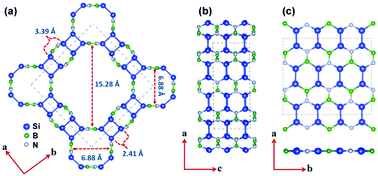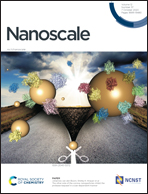Assembling Si2BN nanoribbons into a 3D porous structure as a universal anode material for both Li- and Na-ion batteries with high performance†
Abstract
The development of anode materials is critical to the success of sodium ion batteries (SIBs). Because of the size difference between Li and Na, the commercial anode material graphite in Li-ion batteries does not work for Na-ion batteries. Thus, it will be ideal if some universal anode materials could work for both Li- and Na-ion batteries with high performance. Inspired by a recent study on the high performance of a 2D-Si2BN sheet as an anode material for Li-ion batteries, we design a three dimensional (3D) porous structure by using the nanoribbons of a Si2BN sheet as building blocks. Based on the state-of-the-art ab initio calculations, we find that the resulting 3D porous Si2BN structure is stable chemically, dynamically and thermally, exhibiting a high specific capacity of 512.42 (341.61 mA h g−1), a low voltage of 0.27 V (0.15 V), a small volume expansion of 2.5% (2.7%), and a low migration energy barrier of 0.44 eV (0.19 eV) for Li- (Na-) ion batteries. These intriguing features, together with the light mass and rich abundance of Si, B and N, suggest that the 3D porous Si2BN structure is a promising candidate for the anode material of both Li- and Na-ion batteries.



 Please wait while we load your content...
Please wait while we load your content...